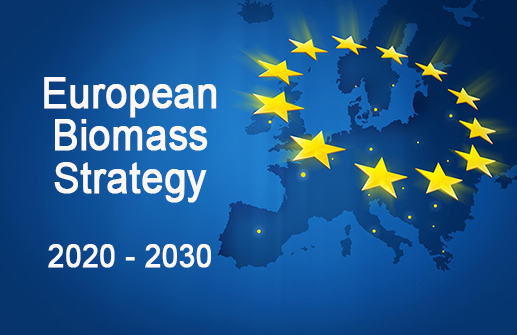European Union Strategy regarding solid biomass (wood pellets, woodchips, torrefied biomass, pyrolysis oil) is focused on promoting the use of domestic and cost-efficient solid biomass. At the same time, Europe has also demand for sustainable and cost-effective imports of solid biomass delivered from non - EU countries. There are the regions, which have already proved to be reliable biomass suppliers and that is why are considered as increasingly relevant and perspective.
The stats for 2005 stated that the EU met about 4% of its energy needs from biomass. Burning biomass for energy purposes increases carbon emissions in the atmosphere for upcoming decades, that is the conclusion of many researches. Wood based biomass combustion releases 75% more CO2 per unit of energy (0.35 kgCO2e per kWh) compared to natural gas (0.2 kgCO2e per kWh) that is explained by a lower hydrogen content of wood biomass than fossil fuel. This difference grows further when the efficiency of converting the fuel energy into heat inside buildings is considered (biomass boiler efficiencies are typically 85% compared to gas boilers at 90%). The so-called “biomass” is estimated more carbon-intensive compared with coal when duly measured. The European Union, considering wood biomass energy as “carbon neutral” does not count on multiple scientific evidence. This misguided policy has had some impact on the communities and forests.
Biomass imports current share is only 4.4 percent of total European bioenergy consumption. However, the remaining 95.6 % contributes to the development of local and rural economics, where biomass is harvested and processed. A large percentage of the biomass (600 PJ) imported to Europe is estimated to cost EUR 10-15 per GJ based on port of Rotterdam.
In this respect EU biomass action plan reflects European biomass strategy focused on increasing the use of biomass energy in the EU, diversifying Europe's energy supply, creating new jobs, extending installations capacity at least 1 MW for thermal heating and electricity. These direct measures are aimed at forbidding the use of biomass from forest soil, and other high carbon content areas, controlling biofuel emissions at least 35% lower over their cycle (cultivation, collecting, processing, transport, etc.) in comparison with fossil fuels. The strategy is to encourage new installations are to cut over 50% in 2017 and to increase this figure up to 60% in 2018, favouring national biofuels support programs for efficient installations, encouraging origin monitoring of all biomass processed in EU countries to ensure their sustainability.
EU policy for sustainable bioenergy from 2020 to 2030
The targets of EU for 2030 are to cut emissions of greenhouse gas by 40% compared to 2005, raise energy efficiency by at least 27%, and to increase the portion of renewable energy to 27% in overall energy use.
In its directives on climate, energy and bioenergy policies for the period of 2020 - 2030, the Commission announced that it would present far more improved EU policy for sustainable bioenergy for the period after 2020, as part of the revision of the renewable energy policy due by the end of 2016. This should allow EU’s energy system to become more competitive, sustainable and secure.

